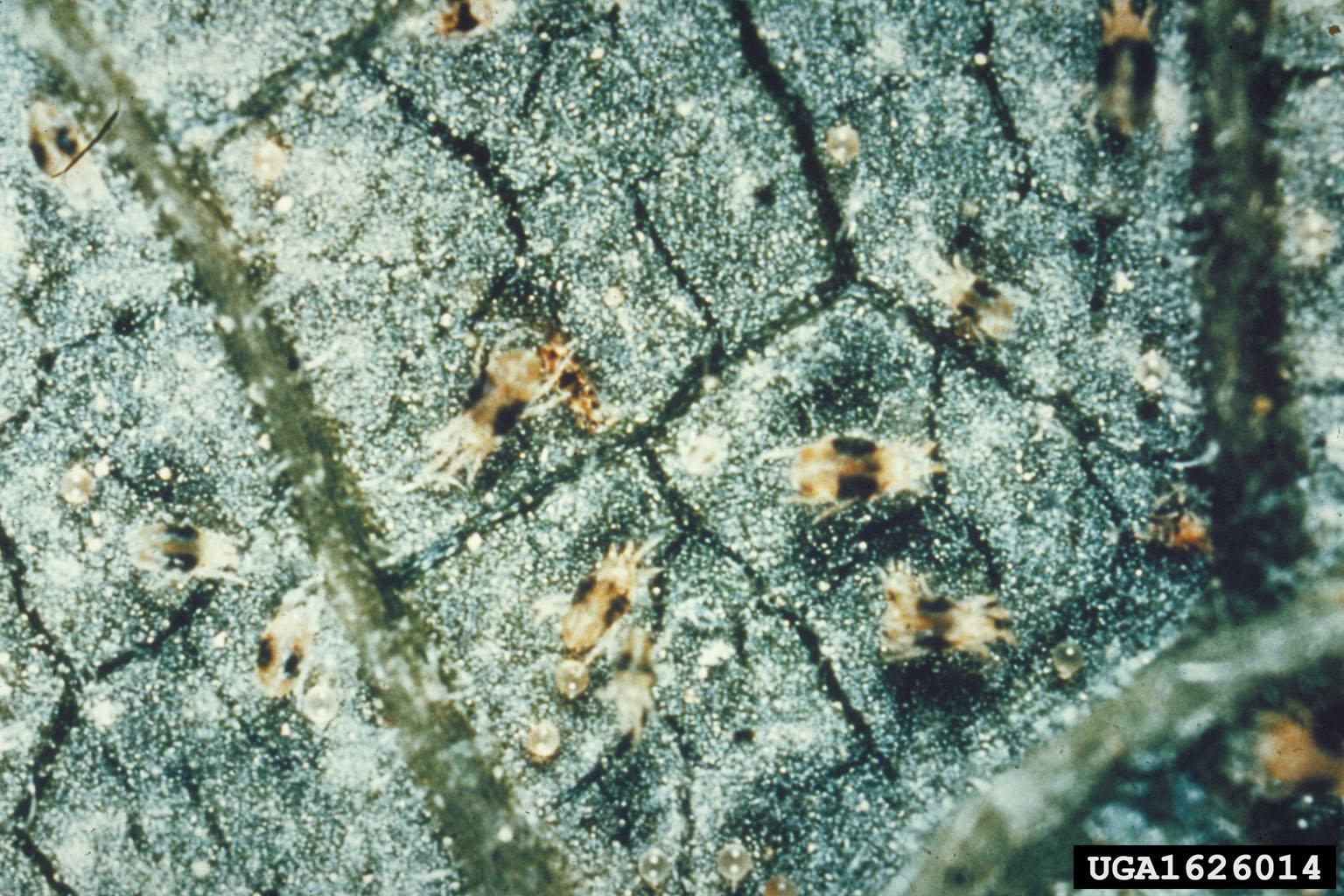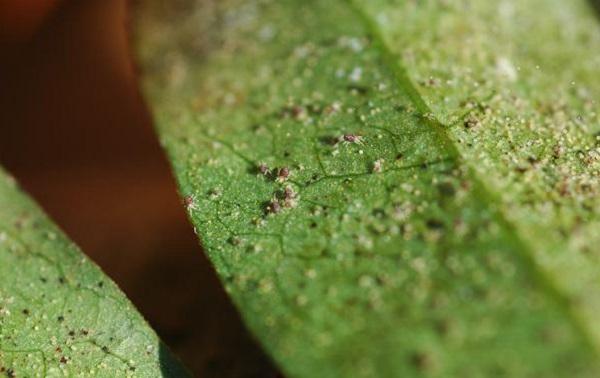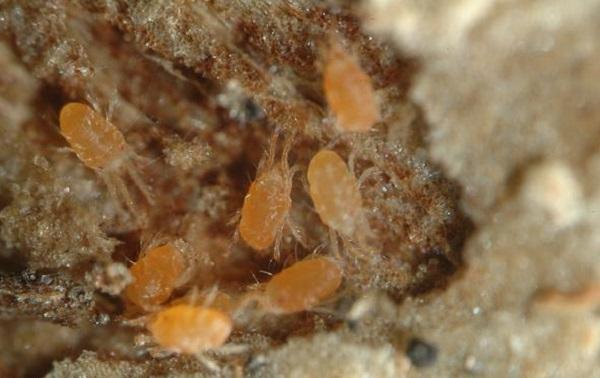Appearance
- Eggs: Minute, spherical, translucent white to yellow/orange; laid singly on undersides, and occasionally on top of, leaves. Leaf surfaces are covered with silk strands.
- Larvae: First instar (growth stage) larvae are tiny, pale, with nearly spherical bodies and 3 pairs of legs.
- Nymphs: These next two instars resemble the larval stage, but are usually red or green, with 4 pairs of legs.
- Adults: Tiny, eight-legged arthropods (related to spiders) about the size of a punctuation period. Body shape is oval to elongate-oval. Yellowish-green or reddish-orange in color and some species have 2 to 4 dark spots on the back. Species identification based on body color is unreliable.


